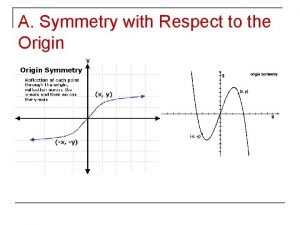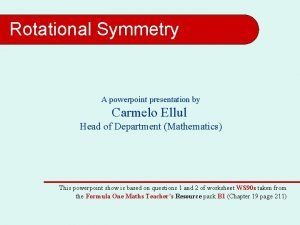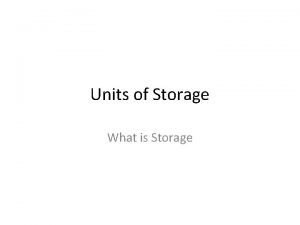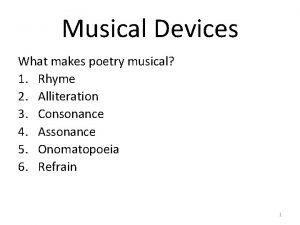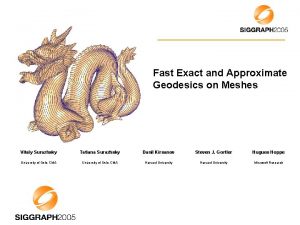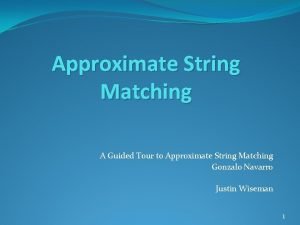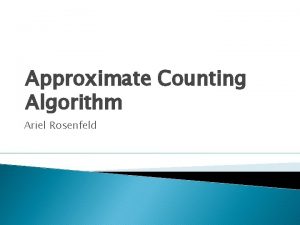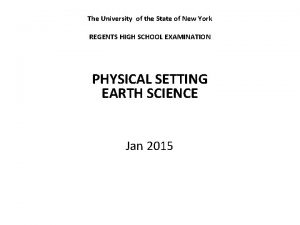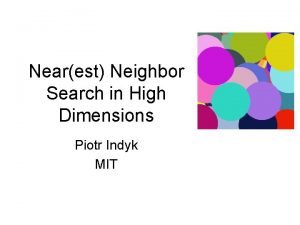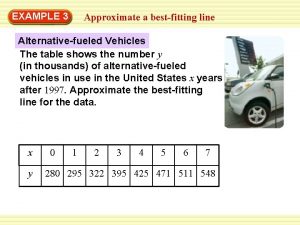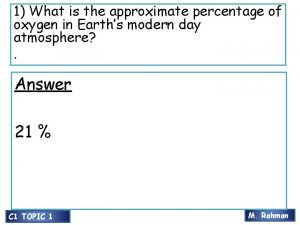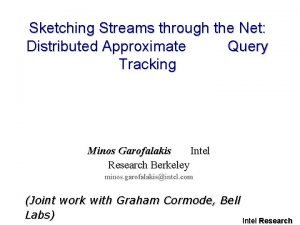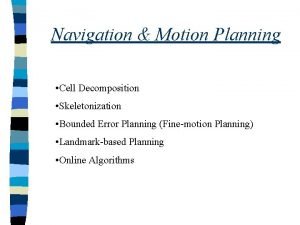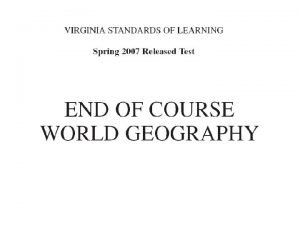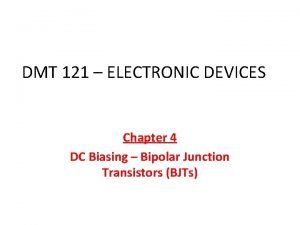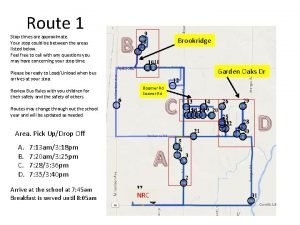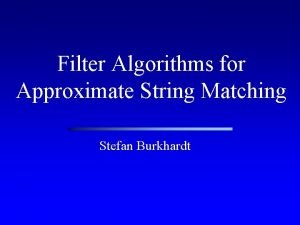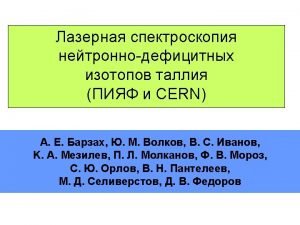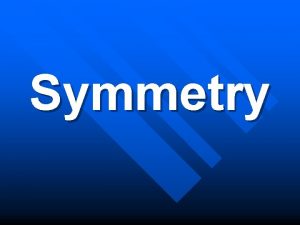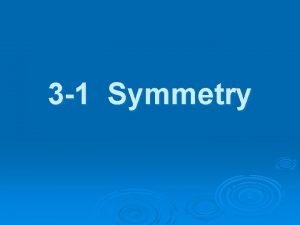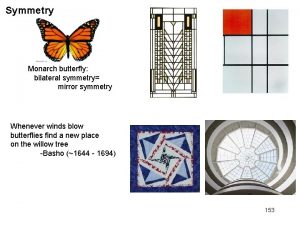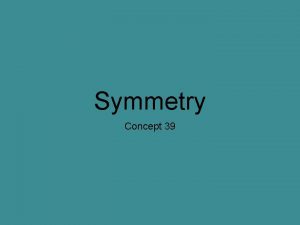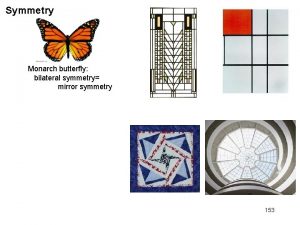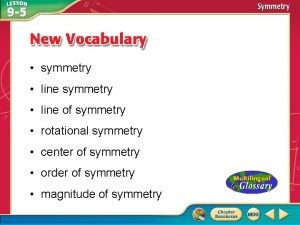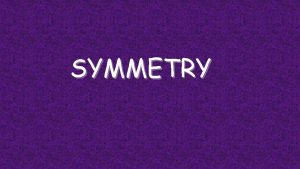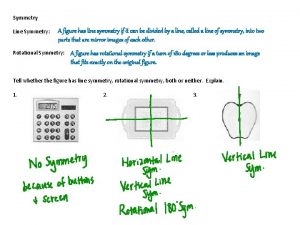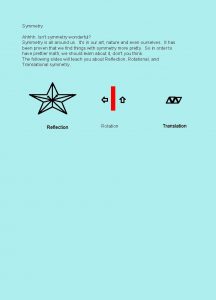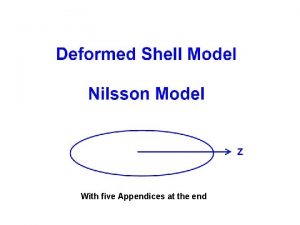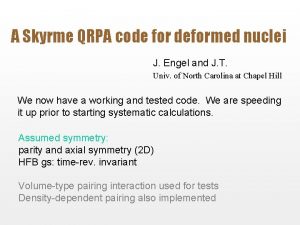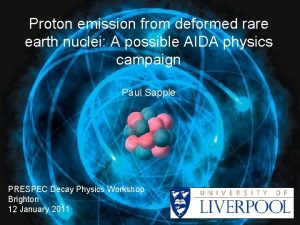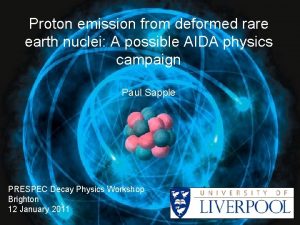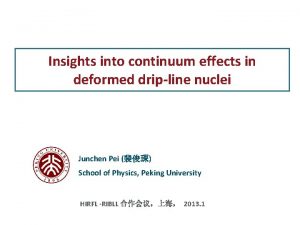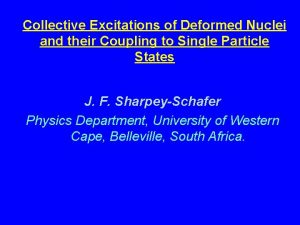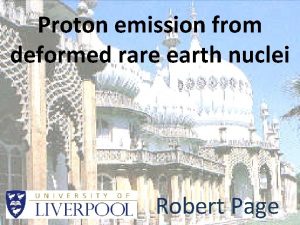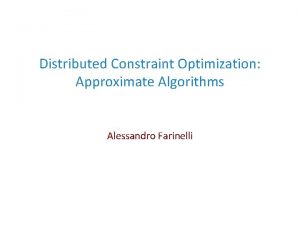A new approximate symmetry for heavy deformed nuclei












![Spatial overlaps (yp 2 yn 2) of Nils. wave functions 0 [110] Overlap: 0. Spatial overlaps (yp 2 yn 2) of Nils. wave functions 0 [110] Overlap: 0.](https://slidetodoc.com/presentation_image/2fa4ed54eb27f17492ca2fce62ef7378/image-13.jpg)
![Inspired the idea to focus on proton-proton and neutron orbits related by 0[110] as Inspired the idea to focus on proton-proton and neutron orbits related by 0[110] as](https://slidetodoc.com/presentation_image/2fa4ed54eb27f17492ca2fce62ef7378/image-14.jpg)












- Slides: 26

A new approximate symmetry for heavy deformed nuclei: Proxy-SU(3) R. F. Casten Yale and MSU-FRIB SSNET 17, Paris, Nov. 6 -10, 2017 Kerman’s warning to RFC (1981) about experimentalists talking about theory: “Experimentalists should not dabble in thought” (This advice should be squared when it comes to group theory!)

Motivation and Goal n A simple approximation, a new scheme, Proxy – SU(3) -- present a Nilsson calculation that validates this new scheme n What is the starting idea of this scheme? n How does the model work? n Predicting nuclear shapes -- b and g. n Experimental evidence for a prolate-to-oblate shape/phase transition in the rare earth region around neutron number N = 116, in agreement with predictions by microscopic calculations.

Evolutionary patterns of Structure Regularity suggests some form of symmetry at work Courtesy, R. B. Cakirli

The Path to Symmetry Regularity out of chaos Patterns Simple interpretations Geometry Symmetries – Quantum numbers Algebra

Fermionic Symmetries in the Shell Model Key idea: shell model is based on a harmonic oscillator -with modifications (such as squaring off of the potential and the spin-orbit force). The harmonic oscillator can be described using group theory in terms of the SU(3) group. The requirement is: A set of single particle shell model levels consisting of orbital angular momenta (of a given parity) spanning from l = 0 (or 1 for odd parity) to some maximum value and that all the single particle total angular momenta, j = l + ½ and j = l- ½, are present. 2 s-1 d shell in light nuclei: l= j= 0 ½ 2 3/2, 5/2

Fermionic Symmetries in the Shell Model 1950’s: Elliott used this idea to interpret the properties of many light nuclei in the Mg-Ar region in terms of SU(3) in this 2 s-1 d shell: 2 s 1/2, 1 d 3/2, 1 d 5/2 Problem in heavier nuclei due to the intruder UPO

Here is the problem Heavier nuclei: 2 features break SU(3) Unique parity “intruder” orbit descends into next lower shell. This gives an extra orbit in that shell and the loss of the highest j orbit from the parent shell. Hence the s. p. levels no longer satisfy the requirements of a harmonic oscillator or SU(3). Example: 50 -82: l= 0 j= ½ 2 3/2 5/2 4 7/2 + UPO NO j = 9/2 and extra UPO orbit H. O

Broken symmetries are common in nature Question is: Can some form of SU(3) symmetry (approximate) be recovered in heavy nuclei? ? Pseudo-SU(3) is a well known and much studied example that has had success. We want to propose another, called Proxy-SU(3).

Part 1 What is the Proxy symmetry and its motivation? Is it any good?

The Proxy-SU(3) Scheme 82 sdg shell h 11/2 (UPO) from the next pfh shell g 9/2 lowered to the previous sdg shell UPO h 11/2 orbit and loss of g 9/2 ruins SU(3) 50 40 Solution: replace h 11/2 with g 9/2 Lose only one orbital

Proxy Normal UPO NOW have full set of sdg l, j l= 0 J = 1/2, 2 3/2, 5/2 4 7/2, 9/2 Recovers H. O. SU(3). Lose one orbit: 30/32 particles Big problem: Parity issue Spurious matrix elements.

Why make this choice? Short answer: Inspired by work on p -n interactions (from masses) Nilsson orbits K[N, nz, L] 168 Er: p 7/2 [523]; n 7/2 [633] 172 Yb: p 1/2 [411]; n 1/2 [521] 178 Hf: p 7/2 [404]; n 7/2 [514] Cakirli et al, PRC 82, 061304(R) (2010). Note peaks: largest p-n ints d. K[d. N, dnz, d. L] = 0[110] Highly overlapping
![Spatial overlaps yp 2 yn 2 of Nils wave functions 0 110 Overlap 0 Spatial overlaps (yp 2 yn 2) of Nils. wave functions 0 [110] Overlap: 0.](https://slidetodoc.com/presentation_image/2fa4ed54eb27f17492ca2fce62ef7378/image-13.jpg)
Spatial overlaps (yp 2 yn 2) of Nils. wave functions 0 [110] Overlap: 0. 804 ½ [521] ½ [411] 0 [330] Overlap: 0. 616 ½ [631] ½ [301]
![Inspired the idea to focus on protonproton and neutron orbits related by 0110 as Inspired the idea to focus on proton-proton and neutron orbits related by 0[110] as](https://slidetodoc.com/presentation_image/2fa4ed54eb27f17492ca2fce62ef7378/image-14.jpg)
Inspired the idea to focus on proton-proton and neutron orbits related by 0[110] as well

The Proxy Approximation - look at Nilsson orbits, quantum numbers, for these two h 11/2 and g 9/2 orbits Original shell model orbits Proxy-SU(3) orbits 0[110] d. K[d. N, dnz, d. L] 0[110] No partner minor role A. Martinou

Proxy Nilsson Hamiltonian matrix Spurious matrix elements: number and size Small off-diag and few: ~ 3 - 5% So, maybe not so bad. We will see.

How to test if the spurious matrix elements are a real problem? Calculate a Nilsson diagram and see how different it is from the normal one.

How Good ? Fermionic SU(3) –Valid for deformed nuclei Nilsson diagrams for the N = 82 -126 shell in normal and Proxy shells • Similarity is clear • Greater curvatures g 9/2 orbitals interact with normal parity ones while h 11/2 orbitals do not. Spurious result of approx scheme • For other shells same similarity • Bigger the shell, better the approx heavy nuclei

Now that we did this, we see that the Proxy substitution is not so bad. So, forget all the Nilsson stuff – that was just to vet the idea. Part 2 Now lets look at how to predict things with this scheme. Start with ground state properties. Fermion Proxy SU(3) symmetry – need SU(3) quantum numbers. Called (l, m). These categorize sets of states. Analogy, a bosonic SU(3)

Typical Bosonic SU(3) Scheme (l, m) K bands in (l, m ) : K = 0, 2, 4, - - m Series of bands labelled by SU (3) Irreps. Note: Ground state band is (2 N, 0) where 2 N is the number of valence nucleons. Need to get analogous irreps for Proxy SU(3).

Proxy-SU(3): For shell with N particles, group is U(N/2) with subgroup SU(3). Identify ground state with highest weight irreps labeled by SU(3) quantum numbers: (l, m) Magical group theory stuff happens here p -h asymm comes from Pauli Principle: asymmetric predictions of b, g (see Talk by Cakirli)

Combined (proton + neutron) Proxy-SU(3) irreps

Relation of (l, m) to (b, g) Relation obtained through a linear mapping between the eigenvalues of the invariant operators of the collective model, β 2 and β 3 cos 3γ, and the eigenvalues of the invariants of SU(3). The basic idea behind this approach is that if the invariant quantities of two theories are used to describe the same physical phenomena, their measures must agree. The derivation is based on the fact that SU(3) contracts to the quantum rotor algebra for low values of angular momentum and large values of the second order Casimir operator of SU(3). Large values of C 2 occur for large values of λ and/or μ. The SU(3) irreps appearing in the Tables have λ and/or μ large, thus the use of the contraction limit is justified in these cases.

The next talk, by R. Burcu Cakirli, will start from here and discuss practical applications of this model for predicting nuclear shapes, and their comparison with the data. See also: Phys. Rev. C 95, 064325(2017): Proxy-SU(3) symmetry in heavy deformed nuclei Phys. Rev. C 95, 064326(2017): Analytic predictions for nuclear shapes, prolate dominance, and the prolate-oblate shape transition in the proxy-SU(3) model

Summary • A new shell model scheme, based on an physicsmotivated orbit substitution, recovers an approx SU(3) symmetry applicable to heavy deformed nuclei • The Proxy Scheme is extremely simple but also has inherent flaws whose significance is assessed • The result is a set of analytic parameter-free predictions for nuclear ground state shapes and shape changes. • Needed improvements (e. g. , incorporation of pairing) and extensions (e. g. , higher intrinsic excitations)

Collaborators Dennis Bonatsos Nikolay Minkov R. Burcu Cakirli Klaus Blaum Andriana Martinou I. E. Assimakus S. Sarantopoulou THANKS
 Ratey rational functions
Ratey rational functions Symmetric respect to origin
Symmetric respect to origin Symmetry in nature ppt
Symmetry in nature ppt Auxiliary memory
Auxiliary memory Approximate computing
Approximate computing Board ga,e
Board ga,e Euphemism examples
Euphemism examples What are the approximate dates of the baroque period
What are the approximate dates of the baroque period What is consonance
What is consonance Fast exact and approximate geodesics on meshes
Fast exact and approximate geodesics on meshes A building bent deflects in the same way as
A building bent deflects in the same way as A guided tour to approximate string matching
A guided tour to approximate string matching Approximate computing
Approximate computing Approximate counting algorithm
Approximate counting algorithm Fourteen billion years represents the approximate age of
Fourteen billion years represents the approximate age of Focal points are enclosed within the core
Focal points are enclosed within the core Lshzoo
Lshzoo How to approximate the best fitting line for data
How to approximate the best fitting line for data Vancouver art gallery
Vancouver art gallery What is the approximate percentage of oxygen in the air?
What is the approximate percentage of oxygen in the air? Sketch techniques for approximate query processing
Sketch techniques for approximate query processing Approximate cell decomposition
Approximate cell decomposition What does this map represent
What does this map represent Refrain figurative language
Refrain figurative language Voltage divider bias configuration
Voltage divider bias configuration Times are approximate
Times are approximate A guided tour to approximate string matching
A guided tour to approximate string matching

